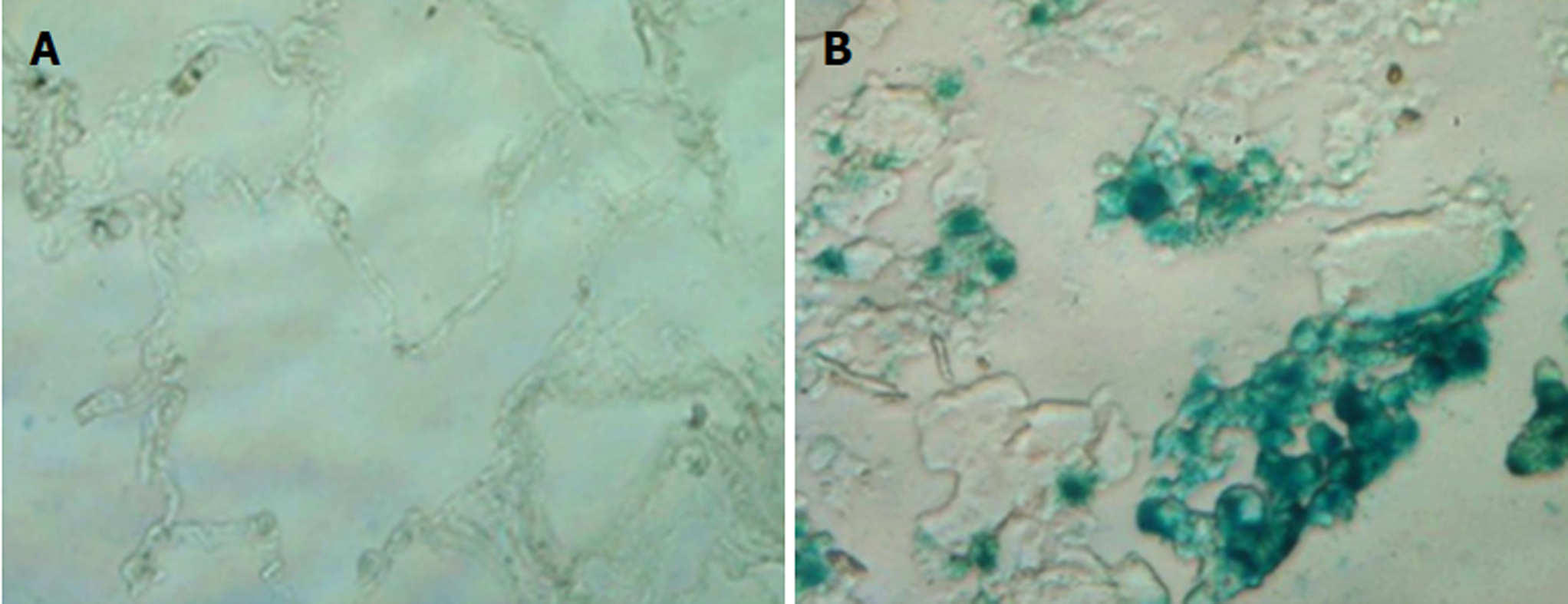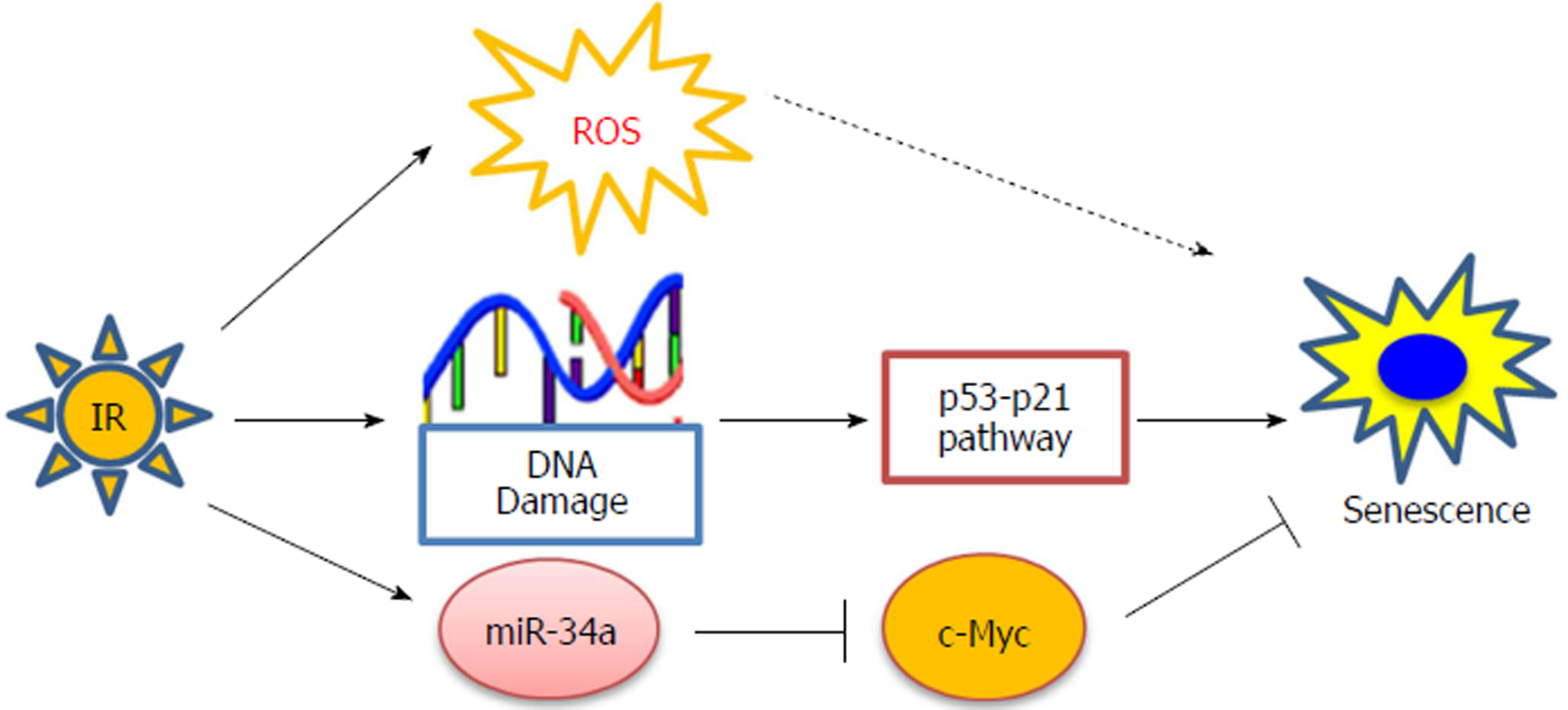Copyright
©The Author(s) 2018.
World J Clin Oncol. Dec 20, 2018; 9(8): 180-187
Published online Dec 20, 2018. doi: 10.5306/wjco.v9.i8.180
Published online Dec 20, 2018. doi: 10.5306/wjco.v9.i8.180
Figure 1 Number of senescent cells is significantly higher in tumor tissues of lung cancer patients than in normal lung tissues.
Senescence-associated β-galactosidase staining was performed to analyze senescent cells in normal human lung tissues (A) and tumor tissues of lung cancer patients (B), respectively.
Figure 2 This model summarizes the mechanisms underlying ionizing radiation-induced senescence in non-small cell lung cancer cells.
Ionizing radiation (IR) exposure increases the levels of reactive oxygen species in tumor cells and oxidative stress is known to trigger the induction of senescence. IR exposure leads to DNA damage which in turn can activate the p53-p21 senescence pathway. Irradiation up-regulates the expression of miR-34a that inhibits c-Myc, resulting in the induction of senescence. ROS: Reactive oxygen species; IR: Ionizing radiation.
- Citation: Qin S, Schulte BA, Wang GY. Role of senescence induction in cancer treatment. World J Clin Oncol 2018; 9(8): 180-187
- URL: https://www.wjgnet.com/2218-4333/full/v9/i8/180.htm
- DOI: https://dx.doi.org/10.5306/wjco.v9.i8.180














